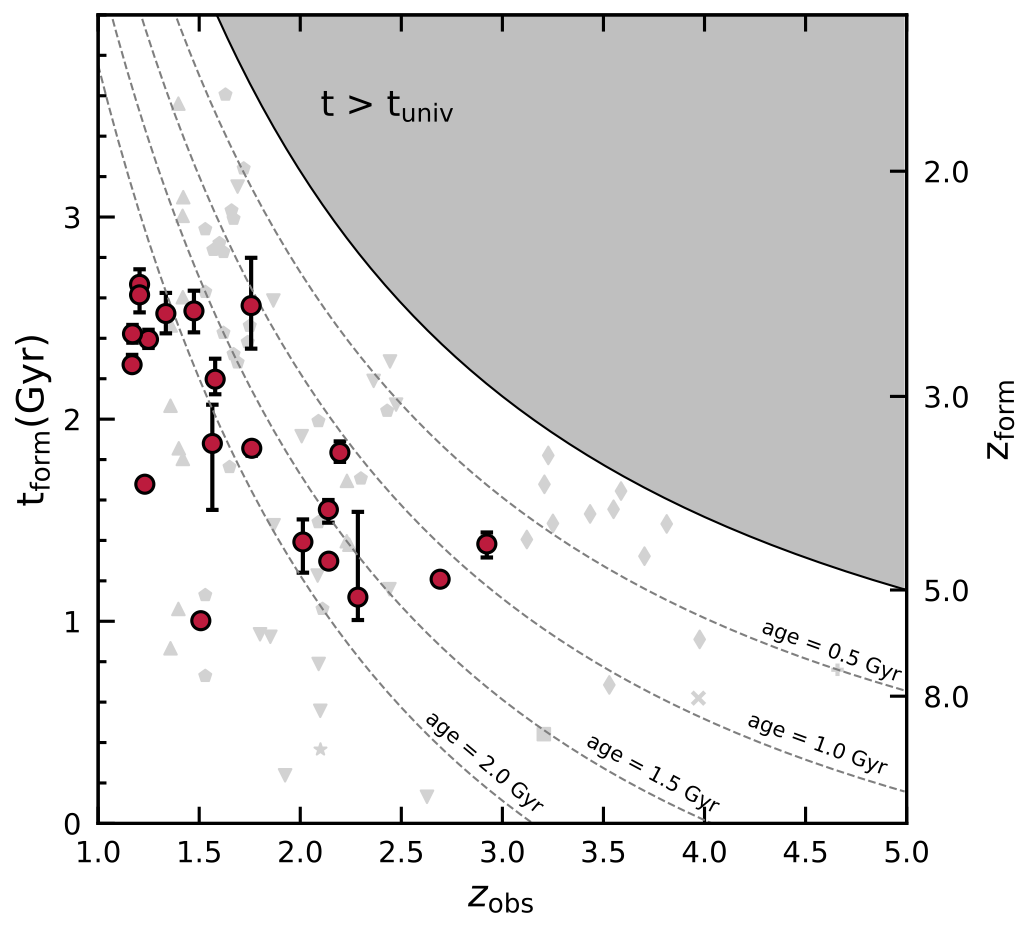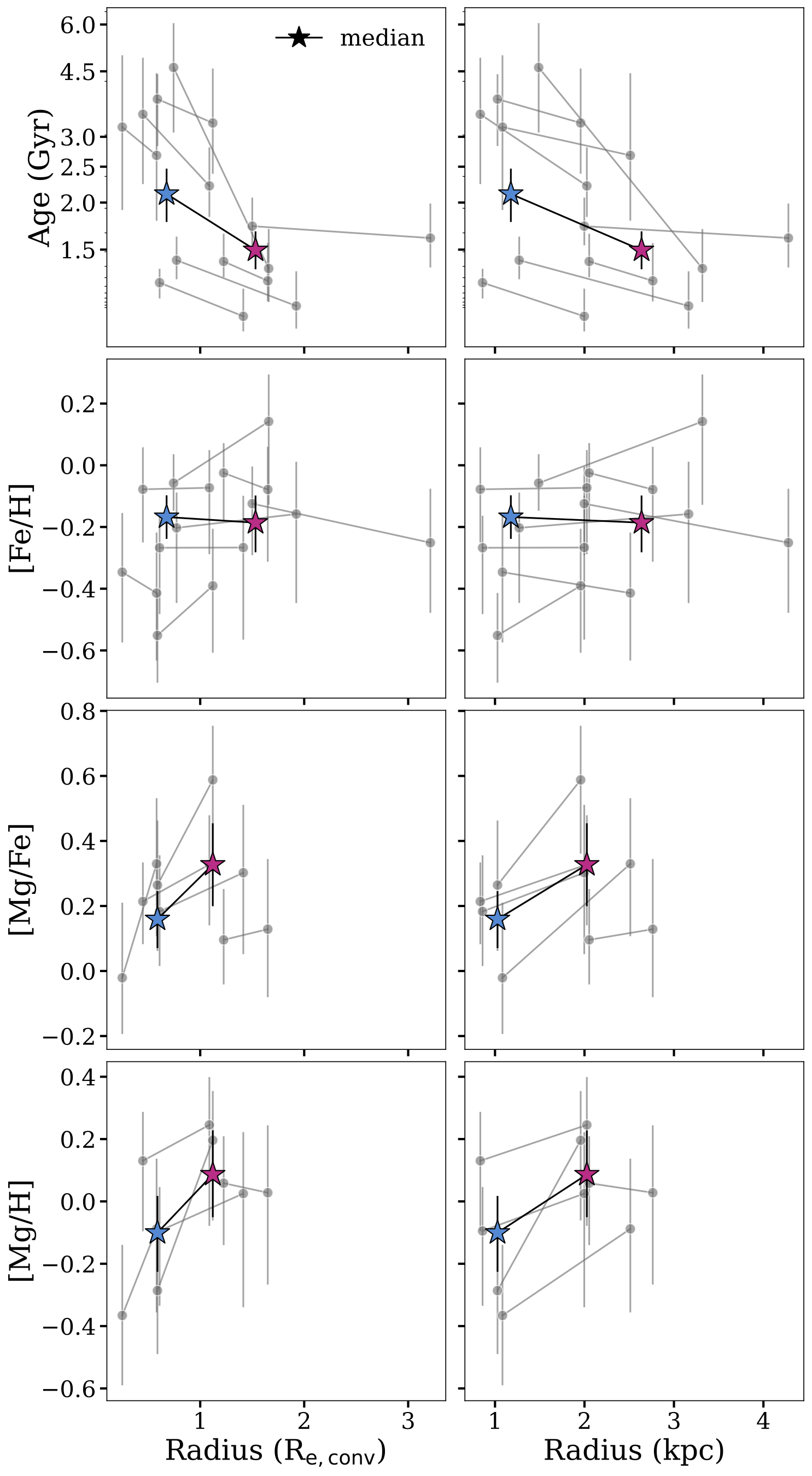Star-Formation Histories and Stellar Populations

This figure shows the formation time (tform) as a function of the observed redshift (zobs) for the quiescent galaxies in the JWST-SUSPENSE sample.
The JWST-SUSPENSE program has provided some of the deepest, high quality spectra of quiescent galaxies at cosmic noon observed to date. We leverage these data to model detailed stellar populations and star-formation histories using the Prospector stellar population fitting code. The SUSPENSE sample covers a range of ages and star formation timescale. Several were already quiescent by z = 3, while others quenched later, indicating diverse evolutionary paths. Galaxies at higher redshift formed their stellar mass earlier and on shorter timescales than those at lower redshift, suggesting that both early rapid formation and later mergers or residual star formation contribute to the buildup of the quiescent population over cosmic time.
More details about this project can be found in M. Slob et al., 2024.
Elemental Abundances
Resolved Stellar Kinematics
With the JWST-SUSPENSE program we have measured spatially resolved stellar kinematics for the first sample of massive quiescent galaxies at z>1. We developed a novel forward modeling approach based on MSAFIT to extract the kinematics from the 2D NIRSpec/MSA slit-based absorption line spectra. Surprinsingly, we found that all quiescent galaxies for which we could constrain the kinematics were still significantly rotationally supported. This implies that the transformation into the slow rotators in the local universe happens gradually after quenching, instead of rapidly during quenching. This supports a scenario in which distant quiescent galaxies evolve through gas-poor (mostly) minor mergers after they have stopped forming stars. The methods developped in this work can be used to extract the kinematics of the star-forming galaxies in JWST-SUSPENSE, as well as for NIRSpec/MSA observations of other observing programs. More details can be found in M. Slob et al., 2025.
Stellar Population Gradients
Spatially resolved stellar populations of massive, quiescent galaxies at cosmic noon provide powerful insights into the processes that quench star formation and build up stellar mass. For the first time, we leverage JWST/NIRSpec-MSA data from JWST-SUSPENSE to measure spatially resolved spectroscopic stellar population gradients in a sample of 8 massive, quiescent galaxies at z ~2. We find that these galaxies’ centres are older and Mg-deficient compared to their outskirts. These findings are consistent with inside-out quenching, suggesting that galaxy cores formed faster and quenched more efficiently than their outskirts. More details can be found in C.M. Cheng et al., 2025

This figure show the spatially resolved stellar population parameters derived from the fits as a function of effective radius (left) and kpc (right).